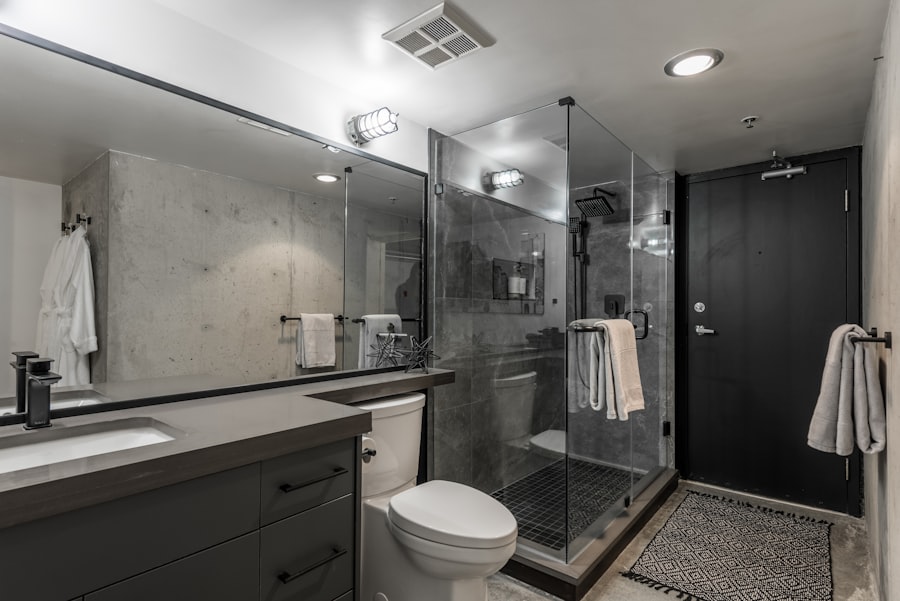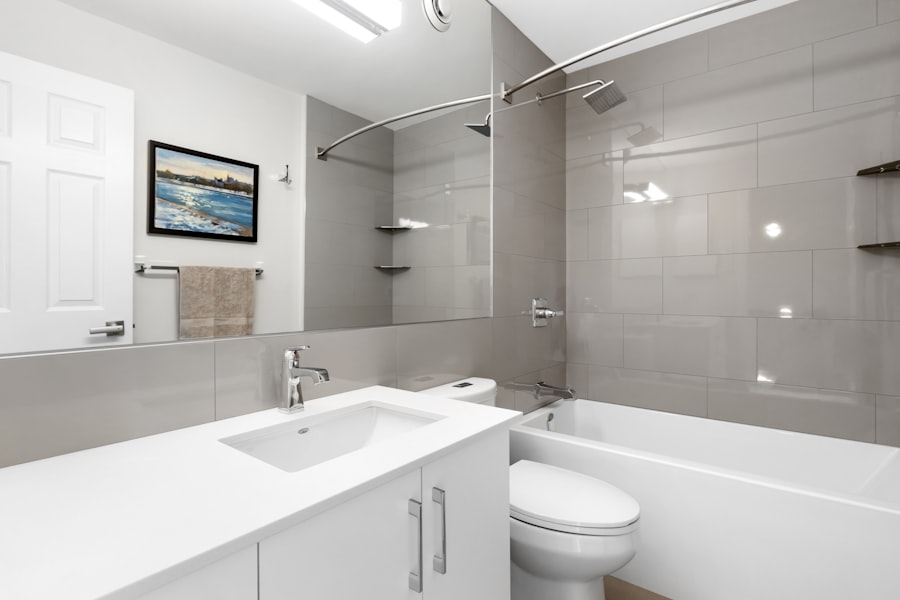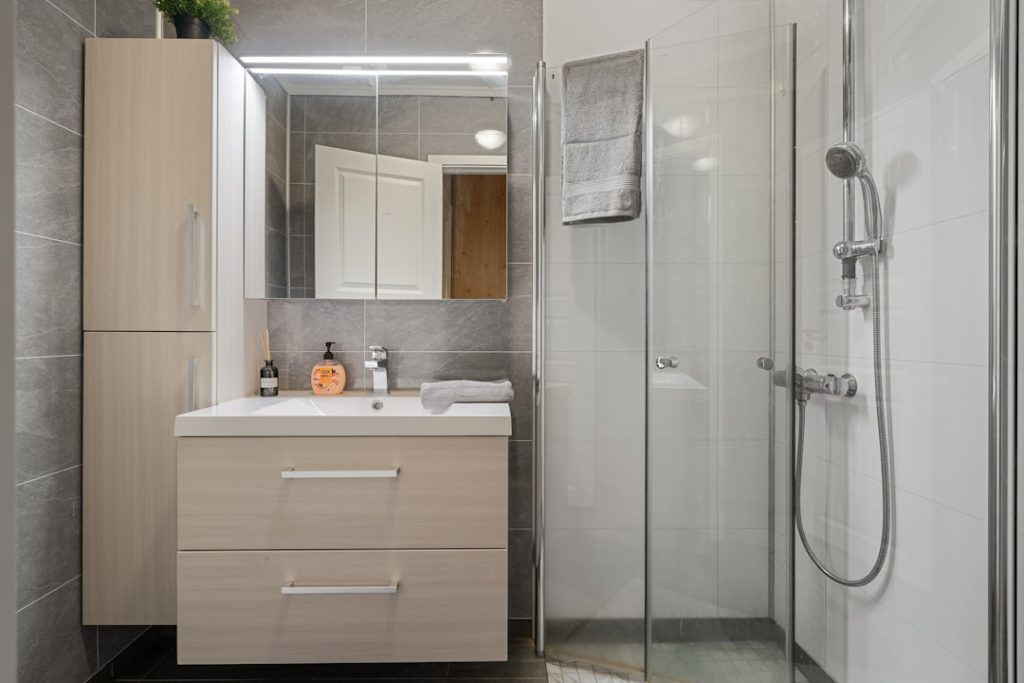When embarking on a bathroom addition project, it is crucial to first grasp the full scope of what the endeavor entails. A bathroom addition is not merely about adding a few fixtures; it involves a comprehensive understanding of space, functionality, and design. The initial step is to assess the existing layout of your home and determine where the new bathroom will be situated.
This requires careful consideration of plumbing access, structural integrity, and how the new space will integrate with the rest of the house. For instance, if you are planning to add a bathroom on the second floor, you must ensure that the existing plumbing can support additional fixtures without overwhelming the system. Moreover, understanding the scope also involves defining the purpose of the new bathroom.
Will it serve as a guest bathroom, a master suite, or a family bathroom? Each type of bathroom has different requirements in terms of size, amenities, and privacy. A guest bathroom may prioritize aesthetics and comfort, while a family bathroom might focus on functionality and durability.
Additionally, it is essential to consider future needs; for example, if you plan to stay in your home long-term, you might want to incorporate features that accommodate aging in place, such as grab bars or a walk-in shower. By clearly defining the scope of your project from the outset, you can create a more focused plan that aligns with your vision and budget.
Key Takeaways
- Clearly define the project scope to accurately plan and budget for a bathroom addition.
- Material quality, labor rates, and complexity significantly influence overall costs.
- Plumbing and electrical work are critical components that can increase expenses.
- Permits and inspections are necessary and add to the total project cost.
- Effective design choices and cost management strategies help control the budget.
Factors Affecting Bathroom Addition Costs
Several factors can significantly influence the overall costs associated with a bathroom addition. One of the most prominent factors is location. The geographical area where you live can dictate labor rates, material costs, and even permit fees.
For instance, urban areas often have higher costs due to increased demand for skilled labor and limited availability of materials. Conversely, rural areas may offer lower costs but could present challenges in sourcing quality materials or skilled tradespeople. Understanding these regional differences is vital for accurate budgeting.
Another critical factor is the size and complexity of the addition itself. A simple half-bath may require less investment than a full bath with multiple fixtures and custom cabinetry. The layout also plays a significant role; for example, if your new bathroom requires extensive plumbing rerouting or structural modifications, costs can escalate quickly.
Additionally, the choice of materials can greatly affect expenses. High-end finishes such as marble countertops or custom cabinetry will drive up costs compared to more standard options like laminate or ceramic tiles. Therefore, it is essential to evaluate your priorities and make informed decisions that align with your budget while still achieving your desired aesthetic.
Estimating Material Costs

Estimating material costs for a bathroom addition involves a detailed analysis of all components required for the project. This includes everything from flooring and wall coverings to fixtures and fittings. The first step in this process is to create a comprehensive list of all materials needed.
For example, if you are installing tile flooring, you will need to consider not only the cost of the tiles themselves but also underlayment, grout, and adhesive. Similarly, when selecting fixtures such as sinks, toilets, and bathtubs, it is important to account for both the purchase price and any additional components required for installation. In addition to basic materials, it is wise to factor in potential waste and overage.
Construction projects often yield unexpected challenges that can lead to material loss or damage. A common rule of thumb is to add an extra 10% to your material estimates to cover these contingencies. Furthermore, consider the long-term implications of your material choices.
While opting for cheaper materials may save money upfront, investing in higher-quality options can lead to lower maintenance costs and greater durability over time. For instance, choosing high-quality plumbing fixtures may result in fewer repairs and replacements down the line.
Labor and Installation Costs
| Category | Unit | Cost Range | Average Cost | Notes |
|---|---|---|---|---|
| Electrician Labor | Per Hour | 50 – 100 | 75 | Includes wiring and fixture installation |
| Plumber Labor | Per Hour | 45 – 90 | 67.5 | Standard plumbing installation |
| HVAC Installation | Per Unit | 500 – 1500 | 1000 | Includes labor for installation of HVAC systems |
| Carpentry Labor | Per Hour | 40 – 85 | 62.5 | Framing, cabinetry, and finish work |
| General Labor | Per Hour | 25 – 50 | 37.5 | Unskilled or helper labor |
| Installation Time | Hours | Varies | 8 – 40 | Depends on project complexity |
Labor and installation costs are significant components of any bathroom addition budget. These costs can vary widely based on several factors, including the complexity of the project and local labor rates. Hiring skilled professionals such as plumbers, electricians, and general contractors can ensure that the work is done correctly and efficiently but comes at a premium price.
It is essential to obtain multiple quotes from different contractors to gauge a fair market rate for labor in your area. The complexity of the installation process also plays a crucial role in determining labor costs. For example, if your bathroom addition requires extensive plumbing work or electrical upgrades, these tasks will necessitate specialized skills that can increase labor expenses.
Additionally, if your project involves custom cabinetry or unique design elements that require more time and expertise to install, this will further elevate labor costs. It is advisable to discuss these aspects with your contractor upfront to gain a clear understanding of what to expect regarding labor expenses throughout the project.
Plumbing and Electrical Considerations
Plumbing and electrical considerations are paramount when planning a bathroom addition. The existing infrastructure must be evaluated to determine whether it can accommodate additional fixtures without compromising functionality or safety. For instance, if you are adding multiple sinks or a shower, you may need to upgrade your plumbing system to handle increased water flow and drainage requirements.
This could involve rerouting pipes or even installing new lines, which can significantly impact your budget. Electrical considerations are equally important; bathrooms require specific lighting solutions and outlets that comply with local building codes. If your new bathroom will include features such as heated floors or additional lighting fixtures, you may need to upgrade your electrical panel or wiring to support these enhancements safely.
Engaging licensed professionals for both plumbing and electrical work is essential not only for compliance with regulations but also for ensuring that all installations are performed safely and effectively.
Permits and Inspection Fees

Obtaining permits and paying inspection fees are often overlooked aspects of a bathroom addition project but are critical for ensuring compliance with local building codes and regulations. Most municipalities require permits for any significant construction work, including bathroom additions. The process typically involves submitting detailed plans that outline the scope of work, materials used, and compliance with zoning laws.
The cost of permits can vary widely depending on your location and the complexity of your project. In addition to permit fees, you should also budget for inspection costs. Inspections are conducted at various stages throughout the construction process to ensure that all work meets safety standards and building codes.
Failing to obtain necessary permits or pass inspections can lead to costly fines or even require you to undo completed work. Therefore, it is advisable to familiarize yourself with local regulations early in the planning process and allocate funds accordingly for permits and inspections.
Design and Customization Costs
Design and customization costs can significantly influence the overall budget for a bathroom addition project. While some homeowners may opt for standard designs that require minimal customization, others may wish to create a unique space tailored to their specific tastes and needs. Custom features such as built-in shelving, bespoke cabinetry, or specialized tile patterns can enhance both functionality and aesthetics but often come at a higher price point.
When considering design options, it is essential to balance personal preferences with budget constraints. Engaging an experienced designer can help streamline this process by providing insights into cost-effective solutions that do not compromise on style or quality. For example, instead of opting for custom cabinetry throughout the entire space, you might choose pre-fabricated options for less visible areas while reserving custom designs for focal points like vanities or shelving units.
This approach allows you to achieve a high-end look without exceeding your budget.
Tips for Managing Bathroom Addition Costs
Managing costs effectively during a bathroom addition project requires careful planning and strategic decision-making. One effective strategy is to establish a clear budget from the outset and stick to it as closely as possible. This involves not only estimating costs accurately but also allowing for contingencies in case unexpected expenses arise during construction.
Another tip is to prioritize essential features over luxury items initially; this allows you to complete the project within budget while leaving room for future upgrades as finances allow. For instance, you might choose standard fixtures initially but plan for high-end finishes later on when funds become available. Additionally, consider sourcing materials from local suppliers or sales events; this can lead to significant savings without sacrificing quality.
Finally, maintaining open communication with contractors throughout the project is vital for managing costs effectively. Regular check-ins can help identify potential issues before they escalate into costly problems and ensure that everyone remains aligned on project goals and budget constraints. By taking these proactive steps, homeowners can navigate the complexities of a bathroom addition while keeping costs manageable.




